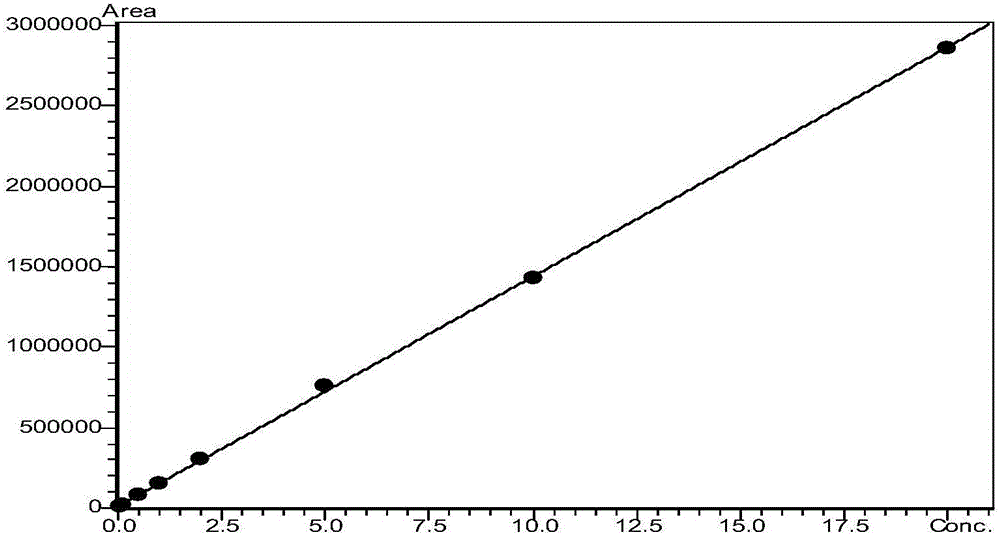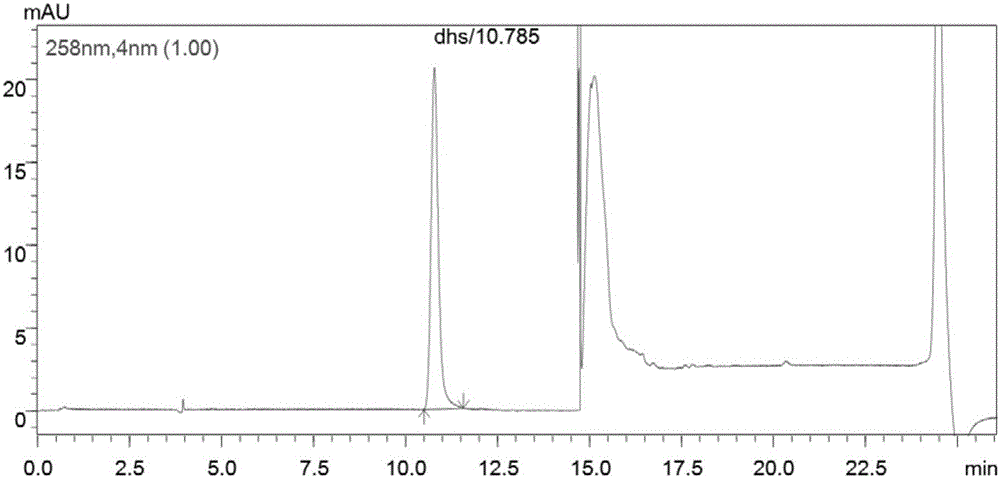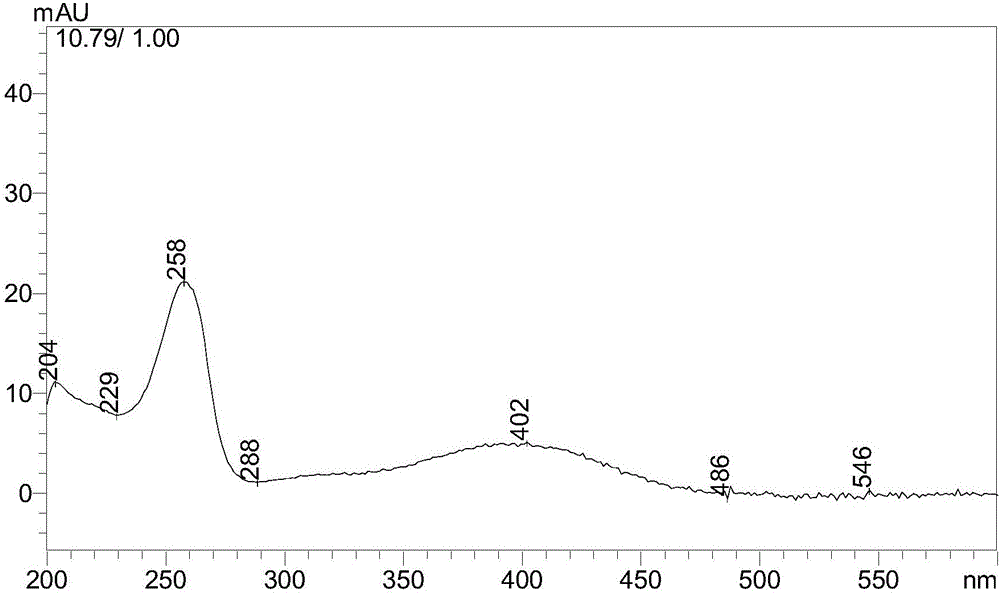Method for quick detection of toxoflavin in food
A detection method and technology for food poisoning, which are applied in measurement devices, instruments, scientific instruments, etc., to achieve the effects of being environmentally friendly, easy to popularize and apply, and reducing interference
- Summary
- Abstract
- Description
- Claims
- Application Information
AI Technical Summary
Problems solved by technology
Method used
Image
Examples
Embodiment 1
[0030] Embodiment 1: Draw the calibration curve of response peak area-toxoflavin concentration.
[0031] (1) Weigh 0.0100g of toxin standard product into a 10mL volumetric flask, dissolve in methanol, set the volume to the mark, and prepare a 1.0mg / mL standard mother solution. Stored in -18°C refrigerator, it can be stored for 3 months. Before use, take it out and let it stand at room temperature, take 200μL of the standard mother solution in a 10mL volumetric flask, dilute to the mark with water, shake well, and prepare a 20.0μg / ml intermediate solution for use. Take 25μL, 50μL, 100μL, 200μL, 500μL, 1.0mL intermediate use solution and 50μL, 100μL standard mother solution in 10ml volume, and dilute to the mark with water. Prepare a series of standard solutions with concentrations of 0.05, 0.1, 0.2, 0.4, 1.0, 2.0, 5.0, and 10.0 μg / ml.
[0032] Simultaneously, this part has been optimized to constant volume solution, has compared the methanol aqueous solution of volume fractio...
Embodiment 2
[0034] Embodiment 2: The present embodiment detects toxanthin in fermented cornmeal by the following method:
[0035] (1) Sample extraction conditions: Weigh 20-25 g of fermented cornmeal and mix with 100 mL of distilled water, extract by ultrasonic for 20 min, take the extract, and centrifuge at 5000 r / min for 5 min to obtain the supernatant.
[0036] (2) Sample enrichment and purification: take 5.0 mL of the supernatant obtained in step 1, and pass it through an HLB (6cc, 200mg) cartridge for purification (before loading the sample, the cartridge is activated with 5mL methanol and 5mL water respectively); After the flow is over, rinse the small column with 5mL of water, squeeze it dry, and discard all the effluent. Then use 5.0mL of 80% methanol aqueous solution for elution to obtain the eluate, dry the eluate with N2, then dilute to volume with 1.0mL pure water, vortex to dissolve to obtain the supernatant.
[0037](3) Chromatographic analysis conditions: the upper machine...
Embodiment 3
[0040] Example 3: In this example, in Example 2, a positive fermented cornmeal sample was prepared by adding toxin standard substance into cornmeal at the same time, and the same method was used for detection. Wherein in step 1, this part has been tested to extraction reagent, has selected distilled water, different volume fraction methanol water (10%, 20%, 40%, 60%, 80%), different volume fraction acetonitrile water (10%, 20%) %, 40%, 60%, 80%) compared the extraction efficiency of the positive sample fermented cornmeal, when implementing this part of the test, directly pipette 3.0ml of the supernatant obtained after the extraction was dried and concentrated by N2 to go on the machine Analysis (without purification by solid-phase extraction cartridges, thereby excluding the influence of cartridge recovery). It was found that the extraction with distilled water, the volume fraction of acetonitrile water was 80% (attached Figure 9 ) and methanol water volume fraction 10% (att...
PUM
 Login to View More
Login to View More Abstract
Description
Claims
Application Information
 Login to View More
Login to View More - R&D
- Intellectual Property
- Life Sciences
- Materials
- Tech Scout
- Unparalleled Data Quality
- Higher Quality Content
- 60% Fewer Hallucinations
Browse by: Latest US Patents, China's latest patents, Technical Efficacy Thesaurus, Application Domain, Technology Topic, Popular Technical Reports.
© 2025 PatSnap. All rights reserved.Legal|Privacy policy|Modern Slavery Act Transparency Statement|Sitemap|About US| Contact US: help@patsnap.com



